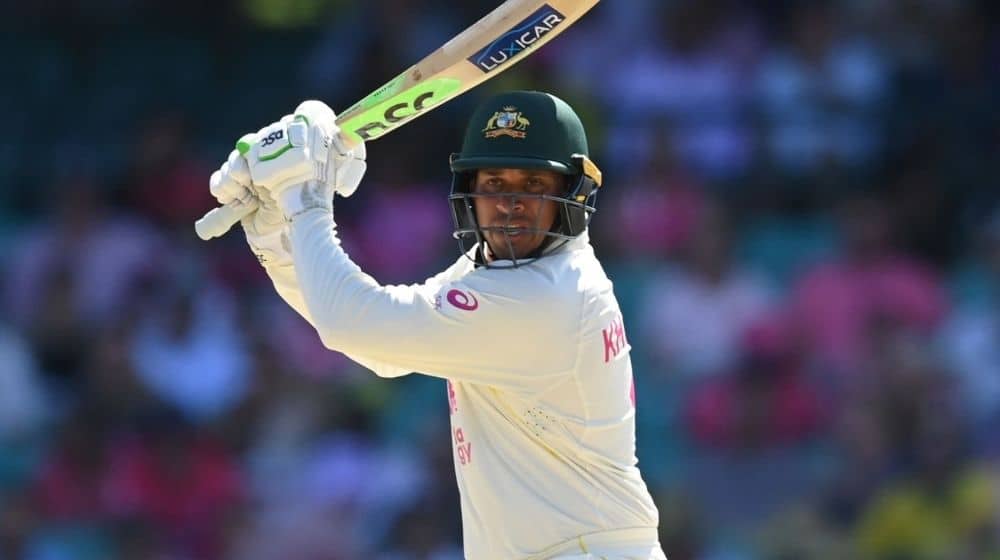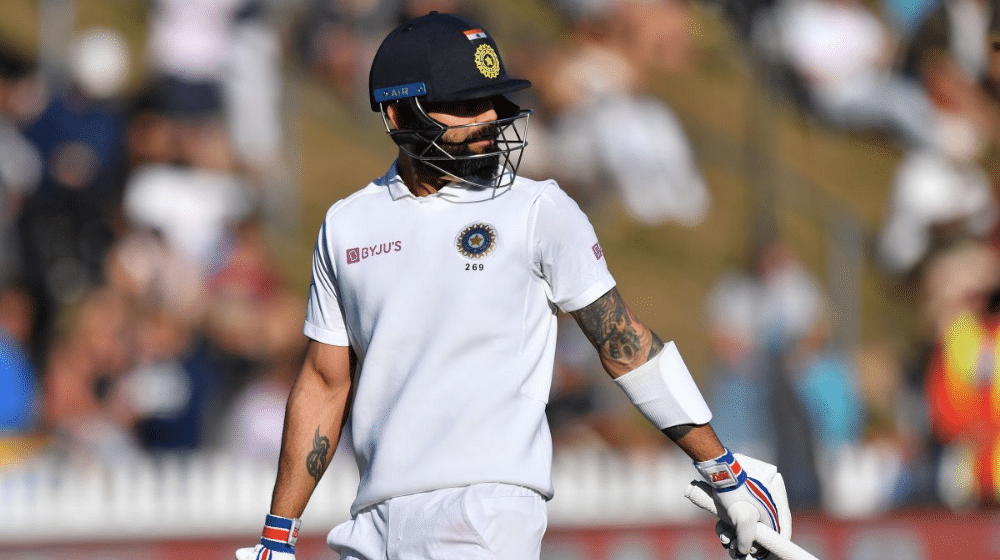In Test cricket, each team’s approach to the game acts as a unique thread that weaves the tapestry of their performance. The World Test Championship of 2021-2023 witnessed an exhilarating display of cricketing prowess, where teams from around the globe competed fiercely to stake their claim as the finest in the format. As we delve into the intricate patterns of their strategies, we uncover a fascinating spectrum of approaches, each distinct in its execution and impact.
From measured consistency to audacious aggression, and from dominant batting showcases to disciplined bowling displays, the participating teams showcased a diverse array of tactics. In this article, we decode the strategic mindsets of three prominent teams – England, Australia, and India, along with a closer examination of Pakistan’s approach. By examining their performances, we aim to gain valuable insights into the art of Test cricket and the approaches that set this enthralling format apart.
1. England
England’s strategy in the World Test Championship seemed to prioritize aggressive and fast-scoring batting to dominate matches. When their batters performed well, they had a good chance of winning. However, they need to work on building resilience in their batting lineup to avoid collapses in case of early setbacks.
Additionally, their consistent bowling performance provided a solid foundation, and they should continue to rely on their bowlers to secure wickets and contain the opposition’s scoring. To improve their overall performance from a win-to-lose ratio of 1.66, England might consider striking a better balance between batting aggression and stability.
Batting Dominance: England’s strategy revolved around aggressive batting with a considerably fast run rate (4.73 runs per over) and a solid batting average of 41.62 in winning matches. They seemed to adopt an attacking approach, which often paid off when their top-order batters fired and accumulated runs quickly.
The stats indicate that England’s batting strategy might be a bit of a hit-or-miss situation. While it worked well in winning matches, the numbers suggest that they struggled to contain the run rate (2.94 runs per over) and their batting average dropped to 21.21 in losing matches. This implies that when their top-order fails to click, they might face significant batting collapses, leading to defeats. Hence, their overreliance on their fiery batting can often backfire.
Bowling Consistency: Despite the fluctuations in their batting performance, England’s bowling remains relatively consistent. Whether in winning or losing matches, their bowling runs per over are quite similar (3.22 in winning and 3.20 in losing matches), and their bowling average remains reasonably stable (26.69 in winning and 33.10 in losing matches).
This suggests that their bowlers are capable of picking up wickets even in challenging situations, but they had little role to play in the success or failure of the team as their strategy heavily relied on their batting prowess.
2. Australia
Australia’s approach in the 2021-2023 World Test Championship demonstrated a team that valued stability and consistency over reckless aggression. Their preference for patient accumulation and big scores showcased their batting prowess, while their disciplined and controlled bowling ensured they remained a tough challenge for any opposition.
By minimizing failures and capitalizing on opportunities, Australia stamped their authority on the championship, establishing themselves as one of the most formidable teams in Test cricket. Australia’s impressive win-to-loss ratio of 3.66 underscores their strategic brilliance. It is a testament to their ability to consistently outperform their opponents and convert a majority of their matches into victories.
Stable Batting: In contrast to teams that opt for rapid runs, Australia preferred a methodical and steady approach at the crease. Their batting strategy revolved around patient accumulation, ensuring they didn’t take unnecessary risks early in the innings. By adopting this measured approach, Australia’s batters were able to construct substantial innings, consistently notching up big scores. Their average of 40.41 in winning matches exemplifies the solidity and resilience of their batting lineup.
While their average dipped to 19.31 in the matches they lost, Australia’s run rates show less variation between their winning (3.70 runs per over) and losing (3.24 runs per over) matches. This indicates a more consistent and disciplined approach from their batting lineup, even in matches where they don’t secure a victory.
Their ability to maintain a steady run rate in losses shows that they avoid drastic collapses and aim to put up competitive scores. Hence, Australia’s batting approach minimizes their chances of being exposed even in tough conditions. The only improvement they might want in their batting department is to develop a better ability to bounce back even after losing big wickets. They might look to build partnerships and stay resilient in the face of crisis.
Effective Bowling: In the bowling department, Australia showcased disciplined mastery. Rather than conceding easy runs, their bowlers displayed remarkable control, ensuring that even when the opposition batters were set, the flow of runs was tightly restricted.
Despite their ability to contain runs even in losing matches (3.09 runs per over), Australia’s bowling average rises significantly to 39.2. This suggests that Australia struggled to dominate in situations where their bowlers could not take wickets regularly, but their success rate shows that there were few instances when Australian bowlers were unable to strike. This proves their bowling excellence, which serves as an important factor in their success.
3. India
India’s strategy in the 2021-2023 World Test Championship was a mixture of brilliance and challenges. India relied on stable batting performances, but there were concerns about their bowling’s effectiveness in difficult situations. The bowlers displayed impressive performances in victories but faced vulnerability in losses.
To improve, they need to focus on strengthening their bowling attack, particularly in terms of controlling the pressure situation. India’s adaptability and resilience were evident from their win-to-loss ratio 0f 2.00 which indicates that they won twice as many matches as they lost, which is a positive sign. While their batting department looks solid they can improve by addressing the shortcomings in their bowling department, as that seems to be the area of most concern.
Batting Strategy: India’s batting run rate remained consistent throughout the matches, indicating that their batters were able to score runs at a steady pace in both winning and losing matches. With a run rate of 3.37 runs per over in winning matches and 3.25 runs per over in losing matches, they displayed a measured approach, avoiding unnecessary risks.
However, the dip in their batting average in losing matches from 35.16 to 21.78 suggests that they struggled to build partnerships and lost wickets when facing challenging situations. To improve their batting, India should focus on developing more resilience and adaptability in handling pressure situations. This may involve enhancing their techniques against high-quality bowling.
Bowling Strategy: In winning matches, India’s bowling performed decently, conceding runs at 2.85 per over and maintaining an average of 19.36. However, in losing matches, their bowling seemed to struggle, conceding more runs (3.46 per over) and having a higher average (37.71). The lack of wicket-taking ability in losing situations is a significant concern.
To improve their bowling performance, India need to work on building more potent and consistent bowling attacks, especially in challenging conditions. They should focus on honing their skills to take wickets regularly and put pressure on the opposition batter.
This could involve studying the opposition batter’s weaknesses and planning their bowling strategies accordingly. Moreover, they should improve their ability to handle pressure and not lose track when the initial plans fail to work.
4. Pakistan
Pakistan’s strategy in the 2021-2023 World Test Championship showcased a team with flashes of brilliance in both batting and bowling departments. Their bursts of batting performances led them to victories, while their bowlers displayed their potential to dominate the opposition in winning matches.
However, there were concerns about their batting struggles and bowling challenges during losses. Striking a balance between their strengths and addressing vulnerabilities would be crucial to improving their win-to-loss ratio and becoming a more competitive force in Test cricket. With a strategic focus on consistency and resilience, Pakistan can aspire to achieve greater success in the future.
Pakistan’s journey in the 2021-2023 World Test Championship showcased a team with a complex and multifaceted strategy, which brought both glimpses of success and areas of concern to light, ending in a win-to-loss ratio of 0.66.
Batting Strategy: Pakistan’s batting prowess was evident in their winning matches, where they achieved a decent average of 38.91. Their ability to construct substantial innings allowed them to post competitive totals on the board. However, in losing matches, Pakistan’s batting unit encountered difficulties, as reflected by their lower average of 27.60. This suggested that they faced challenges in dealing with quality bowling attacks and were susceptible to batting collapses.
Pakistan’s run rate of 2.91 runs per over in winning matches and 3.01 runs per over in losing matches indicated a measured approach. While their scoring rate remained steady, there were instances where they needed to accelerate the run-scoring to seize the initiative in tight contests.
Hence, Pakistan’s calculated approach turned into a conservative approach at times drifting them away from their targets. It is also interesting to note that Pakistan’s run rate slightly increased in their losing matches, showing their inability to bat consistently at a high-scoring rate. Hence, they should work on developing their batting department to bat at a higher rate with greater efficiency.
Bowling Potential: Pakistan’s bowlers displayed brilliance in their victories, maintaining an impressive average of 21.33 and an economy rate of 2.89 runs per over. Their ability to take wickets consistently and apply pressure on the opposition’s batting lineup contributed significantly to their successes.
However, their bowling performance faced significant challenges in losses. With an average of 38.16 and an economy rate of 4.80 runs per over, they struggled to contain runs and lacked the ability to take wickets during these matches. This shows Pakistan’s lack of consistency in pressure situations.
To improve their Test strategy, Pakistan need to set their goals clearly and then strive to achieve them without backing off despite potential failures in the process. Pakistan’s biggest flaw seems to be their inadequacy to determine their game plan and its proper execution which leads to turmoil under pressure.
| Team | W/L | Winning Run Rate | Losing Run Rate | Winning Average | Losing Average |
| England | 1.22 | 4.73 | 2.94 | 41.62 | 21.21 |
| Australia | 3.66 | 3.70 | 3.24 | 40.41 | 19.31 |
| India | 2.oo | 3.37 | 3.25 | 35.19 | 21.78 |
| Pakistan | 0.66 | 2.91 | 3.01 | 38.91 | 27.60 |














